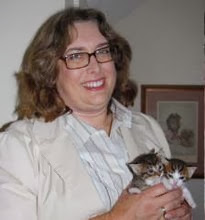Minnesota Zoo will end its dolphin exhibit
Article by: PAUL WALSH
Star Tribune
May 14, 2012 - 12:16 PM
One of the Minnesota Zoo's most popular species will no longer be on exhibit.

The two remaining dolphins are moving within a few months and will not be replaced, the zoo in Apple Valley announced Monday.
Zoo Director Lee Ehmke said Semo and Allie must be relocated because extensive repairs are needed to the 15-year-old Discovery Bay building and the dolphin tank, where the two are housed.
The refurbishment, combined with the species' low availability, means there will be no dolphins at the Minnesota Zoo "in the foreseeable future," Ehmke said.
Ehmke acknowledges that losing dolphins as an attraction will be disappointing to visitors. Except for a few brief interruptions, dolphins have been exhibited at the zoo since it opened in 1978.
"People love dolphins," he said. "It has consistently been one of the favorite animals. They have a lot of charisma, and people find them fascinating and love them, as do we."
Ehmke said that removing 24-year-old Allie and 46-year-old Semo from the zoo is "a done deal" that is not connected to a series of recent deaths among the species at the zoo nor influenced by the debate over whether the marine mammal should even be held in captivity.
The zoo, in a statement Monday, emphasized that it will "continue to support ... the public display of dolphins, marine mammal care programs, and the science and research that is such a critical part of the mission of accredited zoos and aquariums across North America."
Taijah, an Atlantic bottlenose dolphin born at the zoo in 2010 to Allie and Semo, died in February of complications from a stomach ulcer. It was the sixth dolphin to have died at the zoo since 2006.
Allie and Semo's departure will occur "sometime in the fall," Ehmke said, noting that there is a lot of planning to do.
"We will certainly let people know," he said, "and give people the chance to see them before they leave."
Discovery Bay's makeover is being financed through $4 million appropriated by the state through the bonding bill passed last week. The building has been significantly damaged by salt water in the pools and atmosphere. The work will include resealing the pools and reinforcing the building where there is salt water damage.
Ehmke characterized Semo's relocation as a "retirement move." He is currently the oldest male dolphin living in human care, a testament to the quality husbandry he's received for over 40 years.
Paul Walsh • 612-673-4482






















